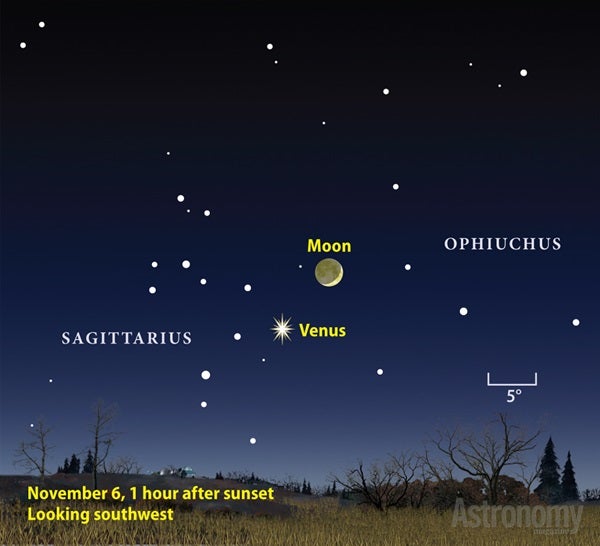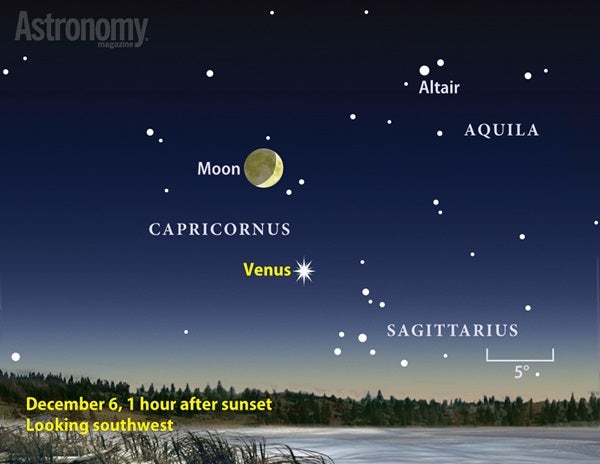Venus, however, lies low in the sky November 1, but it climbs higher as the month progresses. This apparent contradiction is due to solar system geometry. The Sun’s path, called the ecliptic, makes a shallow angle to the horizon; the planets also follow this path across the sky. This means that Venus’ elongation from the Sun translates into more distance along the horizon than altitude above it. Even though our sister planet stands just 11° above the horizon an hour after sunset on November 1, it will move to 15° high by November 30.
“Venus travels against a dense stellar background, setting up great views through binoculars this month,” says Senior Editor Michael E. Bakich. “On the 6th, it passes 8° south of a crescent Moon and two bright nebulae — the Lagoon (M8) and the Trifid (M20) — between the pair. Then, on the 13th, the planet lies 3° south of globular star cluster M22.”
Throughout November and into December, Venus’ appearance will continue to improve, as it ascends higher in the sky and brightens. Then, on December 6, Venus shines at magnitude –4.9, the brightest it ever gets. It’s so bright, in fact, that you might be able to see a shadow: Try waving your hand above a fresh blanket of snow.
Look for Venus as this point in time 15° above the horizon an hour after the Sun goes down. An extra treat occurs December 5 when it again slides below a waxing crescent Moon.
Fast facts about Venus
- At greatest elongation November 1, Venus lies 61.6 million miles (99.1 million kilometers) from Earth.
- At greatest brilliancy December 6, Venus lies 37.8 million miles (60.8 million kilometers) from Earth.
- Our sister planet orbits the Sun in 225 days.
- Venus is 7,521 miles (12,104 kilometers) in diameter, or 95 percent the size of Earth.
- Video: Tour the solar system: Venus, with Richard Talcott, senior editor
- StarDome: Locate Venus in your night sky with our interactive star chart.
- The Sky this Week: Get your Venus observing info from a daily digest of celestial events coming soon to a sky near you.
- Sign up for our free weekly e-mail newsletter.












